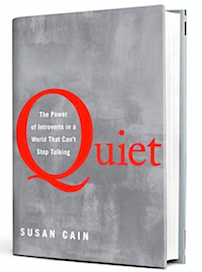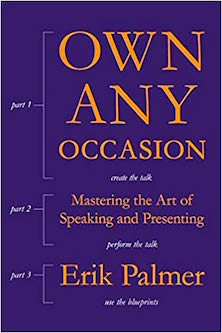Authentic “Student Voice” Includes Speaking Skills
voice. The sound produced in a person’s larynx and uttered through the mouth, as speech or song. (Oxford Living Dictionaries)
Student voice. What a hot topic! Educational conferences have themes like “Raising Student Voice” and “Speak Up! Finding and Using Our Voices in a Noisy World.” Posts on social media and articles in educational publications write about how to increase student voice – it’s showing up everywhere.
Oddly, every single mention of student voice ignores the first and most important meaning of voice: speaking. The conference with the theme “Speak Up”? Not one strand about oral communication.
When you see the word voice used by educators, it might mean choice or options as in “give students voice instead of directing their learning.” Sometimes it means opinion as in “we need to value student voice and make them feel comfortable expressing their ideas.” Sometimes it means literary style as in “Hemingway has a unique voice in his writing, and we want students to develop their voice as well.”
I’m not arguing with any of those aspects of voice: I think we should give students choices, we should value their opinions, and we should let them have their own style. But we should also give them the gift of being able to verbalize well because when you see the word voice used by everyone else on the planet, it means sounds that come out of the mouth.
We Are Letting Our Students Down
How can so many people talk about giving students voice without thinking about oral communication? That’s the original and most important voice! How do we declare what we want? How do we express our opinions? Overwhelmingly by speaking. We say things out loud. Often that speaking is face-to-face, but increasingly people use digital media to expand the reach and importance of verbal communication.
Tragically, most students don’t speak well. You’ve noticed.
Remember how amazed people were when students at Florida’s Marjory Stoneman Douglas High School spoke? You heard many comments about how well they communicated, and some conspiracy types thought they must be paid actors because normal kids just don’t speak that well.
Two important points here: one, we were impressed because good speaking is not the norm for students; and two, the way these students captured America’s attention was by speaking effectively. As much as we value writing, speaking is by far the number one way to have an impact.

Source: Slate, “They Were Trained for This Moment”
Your middle school students have been in school for seven-plus years. They were often asked to speak in classes before they got to your room. How many of them are impressive speakers today?
For all of that talking teachers made them do, almost none of the students really have an effective voice and can impress an audience with oral communication skills. We have let them down.
This failure shows up in the “real world,” too. The Association of Talent Development, the world’s largest organization of trainers, asked me to write a book for them. Own Any Occasion was written because many of the trainers out there are brilliant at what they do but they cannot successfully share their expertise.
How are they asked to share that expertise? Overwhelmingly, verbally. Yet unfortunately, for all of their schooling, no one gave them effective voice.
We Have the Capacity to Teach Students Effective Speaking
The truth is, it isn’t that hard to teach students how to speak well. Just as there are specific lessons to improve writing (punctuation, capitalization, word choice, sentence structure…) and to improve math (order of operations, simplifying polynomials…) and to improve reading (simile, metaphor, plot line…) we need to offer students specific lessons to improve speaking.
I’ll give you one example. The biggest weakness of almost all speakers is that their talks are dull. They speak in a lifeless way.
Lesson one: To demonstrate the importance of adding inflection, let students practice with phrases where the meaning can change depending on how the words are said.
I don’t think you are dumb. (But everyone else does?)
I don’t think you are dumb. (You think someone else is?)
I don’t think you are dumb. (You know I’m dumb?)
Lesson two: Give a small practice speech where adding life makes a huge difference. Have different students speak – encouraging each one to add lots of feeling.
One time, we had a squirrel in our house. When we opened the door to let our dog out, it ran right in. Everything got crazy! The squirrel was running all over! My mom was yelling, “Do something! Do something! Get that thing out of here.” My sister jumped on a chair and stood there crying her eyes out. My dad was chasing the squirrel with a broom from room to room. “Open all the doors!” he yelled to me. “I did already!” I yelled back. Finally, it ran out. After a minute or so, my dad started laughing. “That was interesting,” he said with a chuckle.

Please Include the Introverts
All students deserve voice. I frequently hear, “But what about introverts?” or “Some kids just don’t like speaking” or “What about autistic students?” I have a longer post about just these questions, but let me mention a couple of things here.
According to Susan Cain, author of the book Quiet, at least one-third of us are introverts. She is, and I know I am. And yet now we both speak for a living. How can that be? Lacking a propensity for something is not the same as lacking the ability to do that thing.

Did I have students who needed extra encouragement? Yes. Students who needed a little hand-holding? Yes. Students who needed a little extra help and practice? Yes. The math teacher on my team had extra sessions to help struggling students. Shouldn’t a teacher asking kids to speak do the same sort of thing? Of course. What kind of teacher doesn’t give extra help to kids who need it?
Autistic kids? The spectrum is large, of course, so there is no one answer for all. Still, look up Temple Grandin, an autistic woman who is now a professor and speaker. And let me tell you about Josh. His mom came up to me in an airport not long ago. “Mr. Palmer? You changed my son’s life. I can’t thank you enough.”
Turns out that 10 years earlier, I’d talked Josh into joining my “Forensics Club.” Unlike competitive high school forensics, we just met to learn how to be better speakers. Each week we’d have a new mini-lesson and a chance to practice the new skill. There was a big talk at the end to put all the pieces together. I don’t know if Josh still panics if he hears a fire alarm, but I know that, according to his mom, he can now talk to others and speak in public.
You see, I didn’t make kids talk in class, I taught them how to talk. Big difference. I didn’t ignore or shortchange the most common and important definition of voice. If you really value student voice, I hope you’ll find ways to give your students the gift of being well spoken.
_______________________________________






































Thanks for allowing me to promote the need for teaching the #1 language art, speaking. I added my website about speaking so readers can get more ideas about how to improve students’ oral communication. And I do give away free books to teachers and administrators who are persuasive.
https://pvlegs.com/
I think you are correct in that we don’t teach students how to speak; however, you a missing another element. It’s one thing to be introverted, it’s another thing to have anxiety, self-confidence, and/or other mental health issues that also need to be addressed.
Teaching students how to speak is crucial but it’s as important, in my opinion, to consider other underlying issues causing problems with student presentations.